
The Tokina 18mm T1.5 Vista Cinema Prime Lens is the fastest full frame 18mm wide angle lens on the market that covers VistaVision sensors. 18mm may not be that wide on an S35 sensor, but it certainly is on a full frame sensor. Fast and wide is not something that usually gets mentioned in the same sentence, but this combination lets you create very unique shots.
Fast and wide ain’t easy
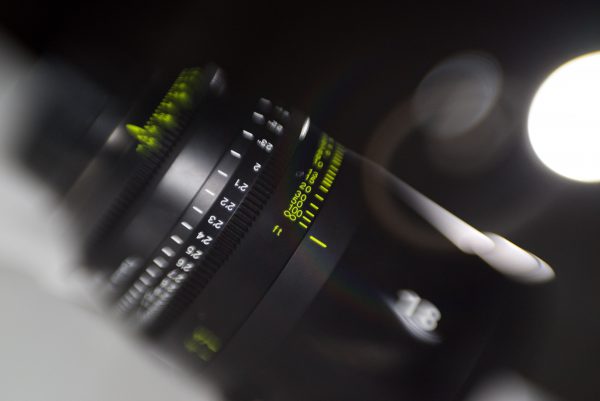
The lens features three aspherical elements and it has 9 aperture blades. The optical design also uses 17 Elements in 14 Groups. Making a lens that is this wide and this fast, with minimal focus breathing, that covers an image circle of φ46.7mm is quite an engineering feat.
So what makes the 18mm T1.5 Vista Cinema so special?
- T1.5 with very limited to no chromatic aberration
- 46.7mm image circle of good definition, the image circle of light is almost 59mm in diameter and will cover the ARRI Alexa65 in 5K mode.
- It has special attention in its design to air gaps and multi aspheres, giving it the visual acuity of the human eye; it looks more natural than any other lens for large format.
The larger the aperture on wide angle lenses, the more difficult it is to control the aberrations, due to the severe “ray bending”. To overcome these hurdles manufacturers require more sophisticated designs, exotic materials, and more expensive engineering. The general design idea is to capture a wide FOV, and slowly bend the rays towards the image plane, minimizing steep refraction angles at the optical surfaces.
The wider the initial aperture, the more apparent optical flaws will become, which means that the lens design has to be close to perfect. But the more perfect you try to make a lens, the more lens elements you need to use in the optical formula.
In addition to this, the larger the aperture or T-stop, the wider the front glass element needs to be. If it’s wider, it’s also thicker in proportion, and all the glass elements behind that front element must be proportionally larger. When this is the case, there is a huge increase in size, cost, and weight.
Making an 18mm full frame T2.8 lens is far easier and cheaper than making a T1.5 one. Every stop you go down equates to an increase in price, weight, size, and complexity. As an example, this may be a bit of a stretch, but If you were to double the dimensions of a diamond, which increases the carats by a factor of 8, the price is going to be exponentially more.
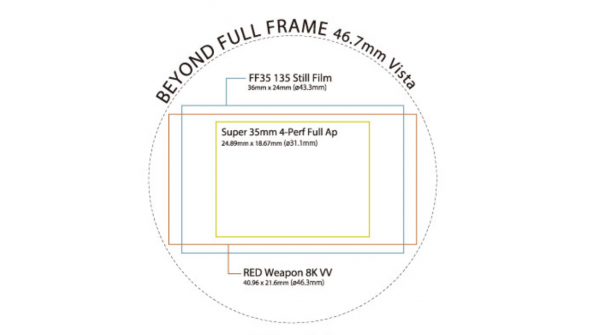
The large image coverage means that the 18mm T1.5 has no problems being used on the RED DSMC2 Monstro 8K VV, ARRI ALEXA LF, or Sony Venice. Having such a massive image coverage gives you peace of mind that you are buying something that is fairly future proof (if there is such a thing).
This is not a rehoused stills lens
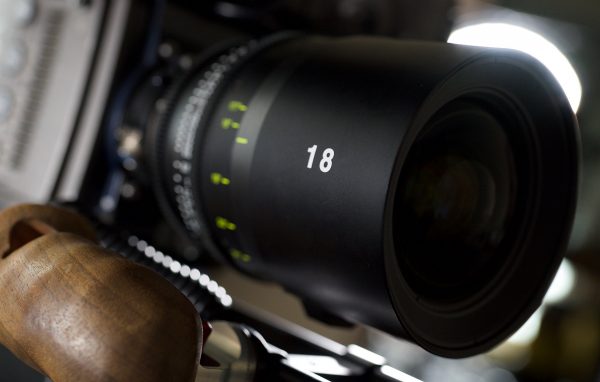
Unlike some of the competition, the Tokina Cinema Vista prime lenses are not rehoused stills lenses. Tokina has purpose-built these just for cinema, with all new elements inside. They are also color matched for consistency across the range. The only other 18mm T1.5 full frame lens I know of is the Canon K-35, but they have to be cine converted. The K-35 lenses were manufactured by Canon during the 1970’s and 80’s and won an Academy Award in 1976. These lenses were used on many large sets such as “Aliens”(1986) and “American Hustle” (2013). The K-35 lens is slightly softer and has less contrast compared to modern lenses, but it is sharper and provides more contrast than other vintage lenses.
It’s a monster
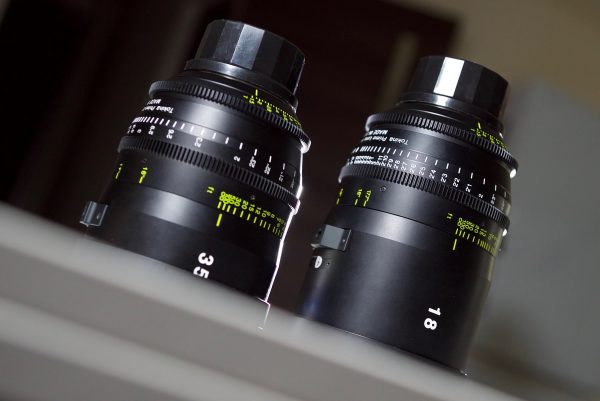
Size-wise it is significantly larger than the other Vista series lenses, and it dwarfs the 35mm T1.5 It weighs in at a whopping 5.9 lb / 2.68 kg. To put that weight into perspective, the Canon CN7x17 KAS S Cine-Servo 17-120mm T2.95 weighs 6.4 lb / 2.9 kg.
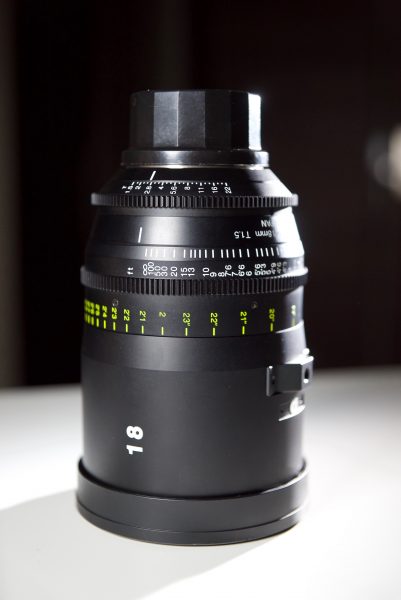
The 18mm T1.5 is also 10″/255 mm long which makes it very big as far as prime lenses are concerned. The front filter diameter is 114mm like all the other Tokina Cinema Vista lenses, but due to the optical design, it doesn’t have a 112mm filter thread like its other siblings.
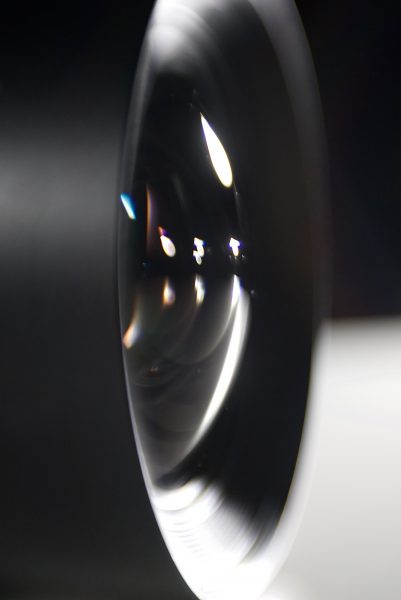
The front element is huge and bulbous, but it’s protected by the lens casing.
Roll out the tank
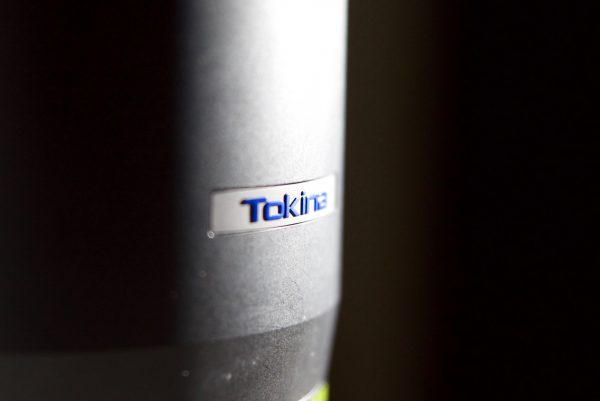
At 2.68kg, the 18mm T1.5 is a heavy, heavy piece of glass and in that regard, it feels very solidly made. The outside of the lens casing is hard metal and while it has been designed in a matte black finish to avoid light reflecting off it, it is susceptible to marks and scratches.
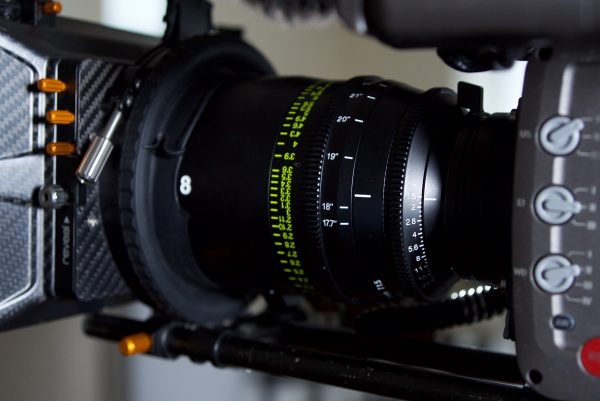
The iris and focus rings are well weighted and their operation is smooth. The focus rotation is 300 degrees, which is great if you are using a follow focus, but if you are pulling focus by hand you will find it difficult going from the minimum focus to the maximum focus point.
There is a built-in lens support adapter that takes a 1/4-20″ thread. Being as heavy as the lens is, it’s probably a good idea to use a lens support, especially when using a version of the lens that isn’t a PL mount.
Markings
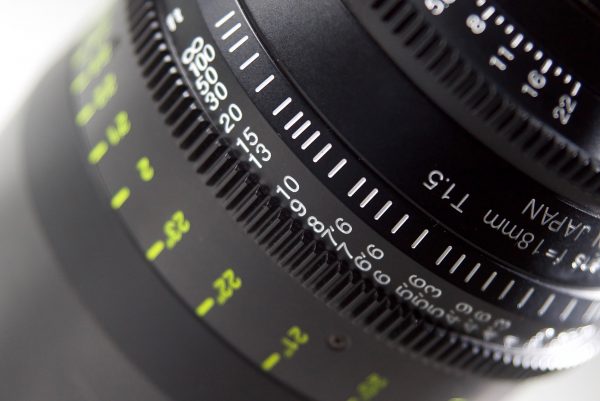
The 18mm T1.5 Vista Cinema has clearly marked focus and iris scales on both sides of the lenses. There certainly are a lot of markings and some cinematographers or camera assistants may think there are too many. What I did discover from going into rental houses here in Japan and talking to camera assistants and cinematographers who work here is that they actually like having lots of marking on lenses. As the lenses are made in Japan this is probably why there are so many markings.
The markings are easy to read and can be seen on both sides of the lens. On the operator’s side, they are white in color and on the cameras assistants side they are a fluoro yellow.
Part of an expanded set of fast primes
Tokina now has 6 lenses in the Vista Cinema series:
18mm T1.5
25mm T1.5
35mm T1.5
50mm T1.5
85mm T1.5
105mm T1.5
It’s great to see a set of lenses with a very fast and consistent T1.5 aperture. Even ARRI’s new Signature Primes only go to T1.8.
Mounts available
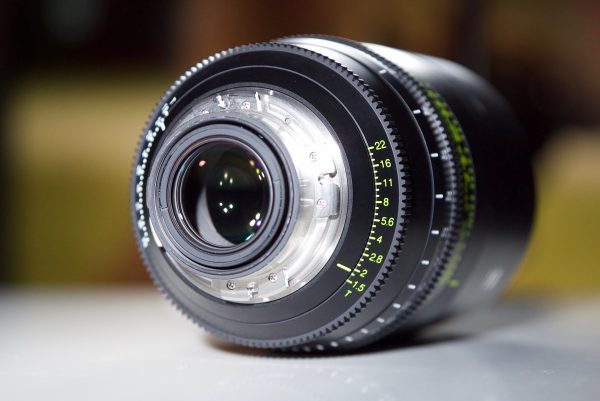
The lens comes in PL mount, Sony E-Mount, MFT, and Canon EF-mount. The mounts aren’t swappable.
How close can you get?
The minimum focusing distance of the 18mm T1.5 is 0.45m (17.7″) which is reasonably good for a wide lens like this. As a comparison, the Zeiss 18mm T2.9 CP.3’s minimum focusing distance is 0.3 m (12”).
Being able to focus this closely allows you to get some pretty creative and interesting shots, especially with wide open apertures. At T1.5 you can create shots that aren’t possible using the majority of other wide angle lenses that are on the market. The ability to have something in the foreground in focus and everything else out of focus, or conversely your foreground completely out of focus while the background is in focus makes this lens a very powerful creative tool.
Hold your breath
The other Tokina Vista Cinema lenses I have tested have had virtually no breathing, so does the 18mm T1.5 follow suit? I found that the lens does breath, but it is fairly well controlled for such a wide lens. If you are only doing focus adjustments that aren’t extreme you will probably barely notice it, but if you are racking from close to far there is a definite image shift.
Distortion
Most wide angle lenses suffer from some type of distortion. Distortion is well controlled on the Tokina and it only exhibits very slight barrel distortion where lines appear curved inwards. It doesn’t show any signs of pincushion distortion, which is the exact opposite of barrel distortion, where lines appear to curve outwards.
Above you can see a few quick tests with the 18mm wide open filming a human face that was very close to the lens. I did this using a full frame Sony a7 III as well as in S35 on a Kinefinity MAVO. I wanted to see how much perspective distortion there was in the center of the frame and out towards the edges.
Please note that the vignette you are seeing on the Sony a7 III is because I am using a mechanical PL to E-mount adapter.
Although the lens isn’t rectilinear, it still does a pretty good job of keeping straight lines straight. As far as perspective distortion goes the lens will stretch faces that are close to the lens, especially when used on full frame sensors. In saying that, it still does a pretty impressive job on human faces for a wide angle lens being used so close to a subject.
Fall off and vignetting
The lens has a really nice fall off and it throws a 54mm light circle so you get a nice amount of illumination across your image without much vignetting of the image.
Sharpness
The lens is nice and sharp and even at T1.5, it performs very well. It is certainly softer out towards the edges of the frame, but not in a way that is distracting or optically bad. Considering the image coverage and fast aperture of this lens, I’m amazed at how sharp it is. Tokina has done an outstanding job given the technical requirements this lens had to fulfil.
As you can see in my tests above, sharpness does improve as you stop the lens down, but the difference between when the lens is set at T1.5 and T5.6 isn’t as huge as you may think.
Lens flare
On a full frame sensor, the lens flare is very well contained, even when used wide open at T1.5. Stopping down does help in reducing lens flare, but regardless of what aperture you are using the lens still manages to maintain good contrast.
The flares you do get are very pleasing and they certainly do give the lens some character.
Chromatic aberration
The lens has almost no chromatic aberration, but I did find that when used at T1.5 there was a tiny, tiny bit, but it’s extremely difficult to see unless you are cropping in massively on your images. I had to crop in 400% on a purposely overexposed UHD image to see it. Even then it was barely visible. As soon as you stop down to even T2, what tiny bit of chromatic aberration there was, completely disappeared. This lack of chromatic aberration at T1.5 on such a wide lens is extremely impressive.
Bokeh
Bokeh is normally something you don’t associate with wide angle lenses, but the 18mm T1.5 produces beautiful bokeh. The bokeh produced is nice and round and you can create some beautiful out of focus areas by using the lens wide open. Even wide open at T1.5 you don’t get any chromatic aberration or see any color bleed on the bokeh.
Color Tone
The Tokina Cinema Vista primes certainly lean more towards warm tones than say lenses from Zeiss. They have a nice amount of character and don’t appear too clinical and uninspiring. What look you actually prefer from a lens is entirely going to come down to personal choice. I really liked the warmer tones of the Tokina lenses as I found the color reproduction matched very well with my Angenieux Optimo Style zooms. This allows me to use a combination of zooms and primes while still maintaining a fairly consistent look.
The color tone of a lens is really something you should look at closely if you are going to be using both prime and zoom lenses from different manufacturers. Certain prime and zoom lenses work better together than others. What will work for you will also depend on what camera you are using.
Real world thoughts
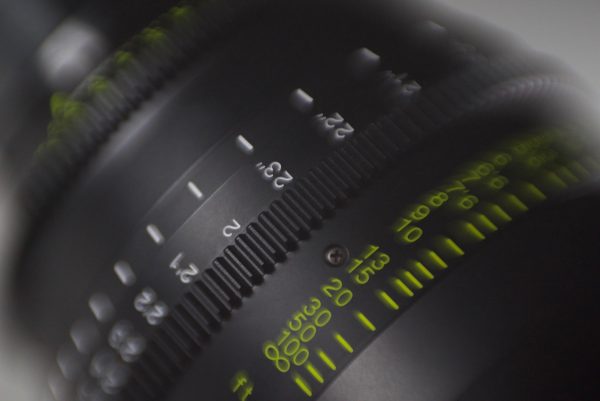
The 18mm T1.5 really allows you to be very creative with a wide angle lens. Too often wide angle lenses are used just for getting a shot, instead of being used in more creative ways. Being able to completely melt away your foreground or background at T1.5 is something you just can’t do with most wide angle lenses. I found that the lens allowed me to come up with interesting ways of using a wide angle that I previously didn’t think was possible.
The beauty of the 18mm T1.5 is it expands the usefulness of a wide angle lens and you find yourself pulling it out of the bag more often than most other wide angles. For me, personally, I found that I was shooing a lot more shots with a wide angle by actually getting closer to my subject rather than moving away from it, which is traditionally what you do with a very wide lens.
The downside to having this fast aperture is you have to be willing to live with the size and weight of this lens. Using a prime lens that weighs in at 2.68kg is no easy task, especially if you are working by yourself. This weight constantly had me in a love-hate relationship with the 18mm T1.5. I loved the images I could get, but I hated lugging the lens around on shoots.
Competition
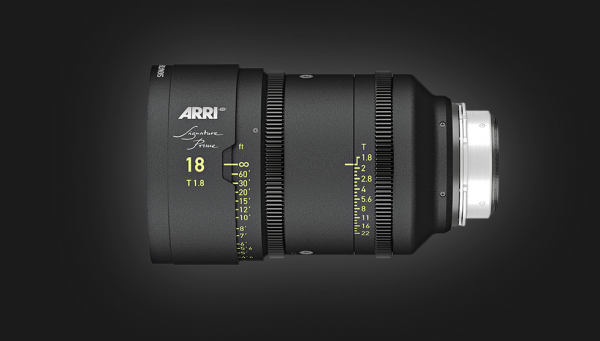
There is a lot of competition in the full frame cinema prime marketplace. Numerous established brands such as Zeiss, Canon, Sigma, Cooke, and ARRI all make full frame cinema prime lenses. The prices of all of these options vary dramatically from just a few thousand dollars all the way up to close to $30,000 USD.
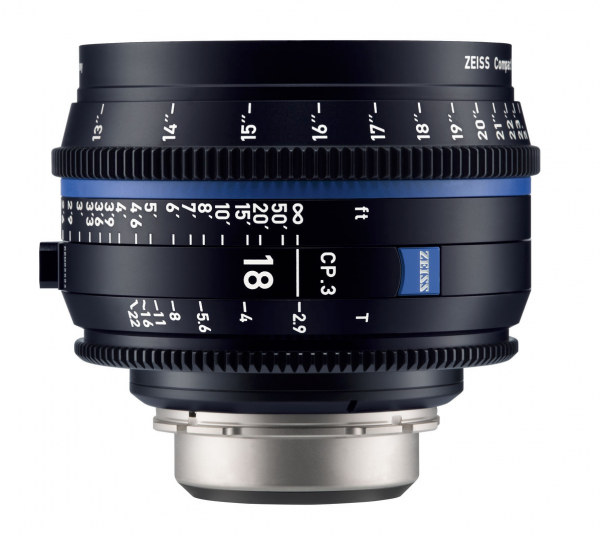
As far as direct competition goes, Zeiss and Schneider are the only other companies that make a new 18mm cinema prime lens that costs below $10,000 USD. However, both the Zeiss CP.3 18mm Compact Prime T2.9 and the Schneider Xenon 18mm T2.4 are considerably slower. The Zeiss does have the advantage of being a lot lighter (0.86 kg / 1.9 lbs), cheaper ($5,290 USD) and you can change the lens mount. You do need to take into account though that it is far cheaper and easier to make an 18mm T2.8 lens compared to a T1.5 one.
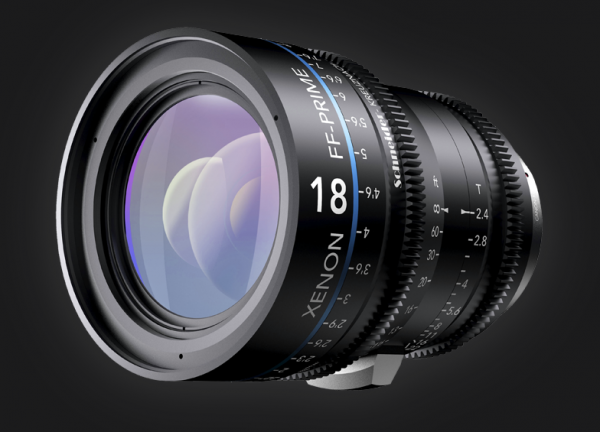
The Schneider Xenon 18mm T2.4 is also lighter at 1.49lb /3.3 lbs and cheaper with a retail price of $6,300 USD
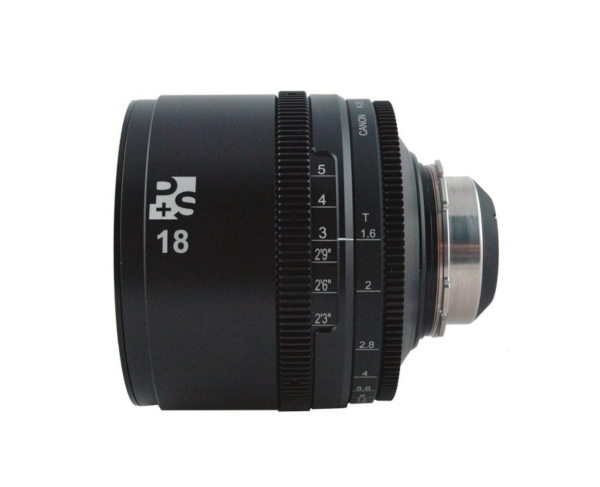
You can purchase cine converted Canon K-35 18mm T1.5 lenses, but they are hard to find and expensive. The K-35’s cover full frame (36mm x24mm ) sensors, but I don’t think they will cover Vista Vision sized sensors as the Tokina does. The K-35 also has quite a lot of breathing, and it isn’t as sharp compared to the Tokina. Being a lens from the 70’s it also doesn’t have modern day coatings.
| 18mm SPECIFICATIONS: | ||||||||||||||||||||||||||||||||||||||||||||||||||||
|
TOKINA 18MM PRICE
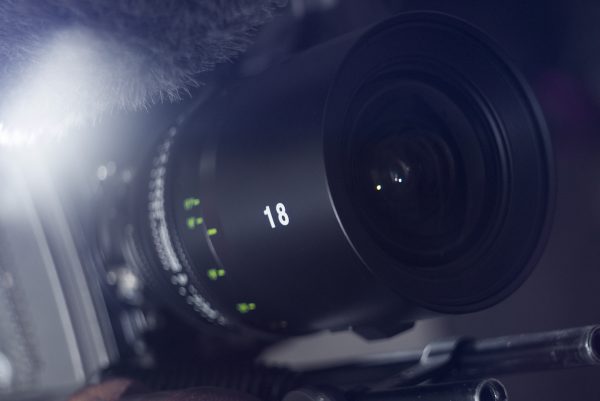
The 18mm T1.5 is hardly a cheap lens and retails for $7,499 USD. That is a lot of money to pay for a prime lens no matter which way you look at it. In saying that, it is considerably cheaper than an 18mm T1.8 ARRI Signature Prime lens ($29,700 USD).
Do you need a full frame cinema prime lens?
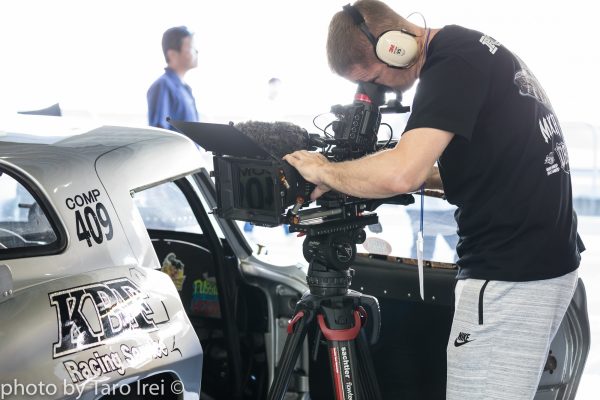
Let’s face it, a lot of us are not shooting on the RED DSMC2 Monstro 8K VV, or an ARRI ALEXA LF, so do we really need a full frame prime lens? I don’t shoot on a full frame digital cinema camera, but I have still chosen to invest in full frame prime lenses. I did this because the industry is moving quickly and I would prefer to spend my money on something that is going to be slightly more future proof than a lens that just covers an S35 sensor. If you do happen to own an S35 camera system that can utilize a speed booster then you would be able to take full advantage of the 18mm T1.5. Of course, you could use this on a full frame DSLR or mirrorless camera, but how many people are really going to use a lens that costs 3 to 4 times more than their camera.
Investing in a full frame lens is going to cost you a lot more money than buying one that just covers S35 sensors, and you need to factor that in ‘when considering what to buy.
Conclusion
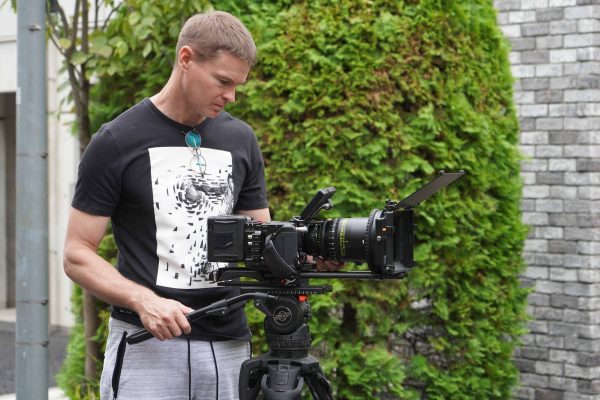
The 18mm T1.5 Vista Cinema is a bit of an enigma. Being wide and fast and covering a huge image circle, it really is a specialty lens. To make a lens like this is no easy feat and the performance you can get out of the 18mm T1.5 certainly justifies the high price. To get the most benefit out of this lens given its high price it really does make more sense to use it on a full frame digital cinema camera, or a camera system that can utilize a speed booster. In saying that you can also get excellent results with this lens on an S35 digital cinema camera as well.
The lens is big and it’s heavy and you really do need to take those factors into account if you want to purchase one. Is it a lens for everyone? No, it’s not, but boy once you have used it you won’t want to give it back.





